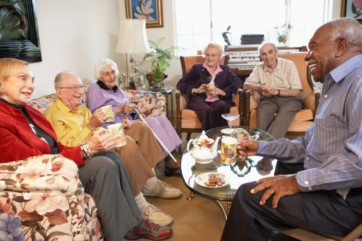
Bring back the bungalow, says Planning Minister Nick Boles. Pensioners love them, he says, and want to spend the last years of their lives in them, so let’s build more.
Mr Boles, there is a reason only 300 bungalows were built in 2009 they look like a joke. They even sound like a joke the very word sounds like a combination of “bungle” and “low”. Bungalows are at the bottom of the housing ladder, and made fun of because they are often so ugly.
Even seaside bungalows are usually carefully hidden behind huge bushes of hydrangeas.
Could you imagine famous pensioners like the Queen and Prince Philip moving into a bungalow? Hardly. And yet there is something in what Mr Boles says.
I have been asked to spearhead a campaign called CHILL (the Campaign for Housing in Later Life) because according to a recent survey by the think-tank Demos, millions of elderly people feel trapped and would really like to move out of their big old family homes.
I know from my own experience how worrying it can be as you grow older to have to deal with a leaky roof, or a wobbly drain-pipe, or a garden lawn that needs mowing.
Then there is the anxiety of having to keep a large unwieldy home on many floors warm and wind-proof, and the concern our families feel that we may fall down the stairs one dark night and be left at the bottom with a broken hip.
But bungalows may not be the best answer.
I have visited some wonderful, innovative projects specially designed for older people. Some are a mix of rental apartments and flats to buy. Some provide extra care for the more fragile residents. All offer the chance to meet your neighbours for coffee in a communal lounge.
Some have hairdressers on the premises, and doctors’ surgeries and spas where you can have a massage or a pedicure. There is excellent public transport, so you can get out and about even if you no longer drive. And in many of the bigger developments there is a pool the community can use, and your grandchildren can splash about in.
I received a letter recently from Carol, a devoted daughter whose mother is 87. She told me her mum is blind and her family have been worried about her. They visited her regularly, “and these visits kept Mum afloat. We shopped, gardened, went to the doctor and the dentist. It was all about keeping Mum going.”
Then one day they went to see one of Mum’s friends who lived in retirement apartments. As they left Mum said: “I wouldn’t mind living there.”
Carol acted at once, and wrote to tell me: “It’s been the most amazing success story. Mum has made so many new friends. The residents arrange trips out, meals, coffee mornings, barbecues, film nights, there are regular knitting and nattering groups. Her life has become a social whirl! The most amazing thing is the independence that this move has brought.”
So Mr Boles, by all means build more bungalows if that’s to your taste. But the crucial thing is, get your planners to prioritise better housing for older people. What they need is safety and company.
Carol ends her letter to me: “One of my mother’s new friends told me that the secret of good health in old age is company. From what I’ve seen it works.”

Enjoy the convenience of having The Sunday Post delivered as a digital ePaper straight to your smartphone, tablet or computer.
Subscribe for only £5.49 a month and enjoy all the benefits of the printed paper as a digital replica.
Subscribe